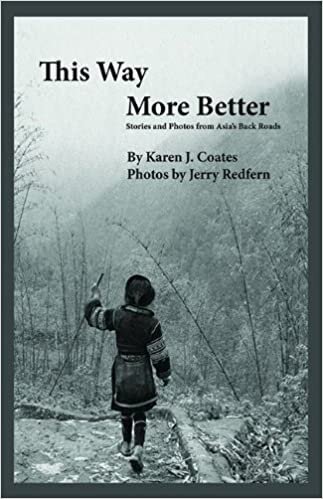From a Chinese City by Gontran de Poncins (Trackless Sands Press)
Vietnam was enjoying a brief respite of peace when Gontran do Poncins came to visit. The French had been vanquished in 1954 and the Americans hadn’t yet begun to buttress their domino theory with armed troops. In February of 1955 de Poncins arrived, a travel writer who had achieved acclaim for Kabloona, his account of living with the Canadian Eskimo for fifteen months. During his northern stay, de Poncins practiced total immersion, living, eating, and behaving as did his hosts, to the point that he completed a 1400-mile trip across the Arctic behind a dog sled.
When he decides to spend four months in Vietnam, he chooses to stay in the Chinese city of Cholon, no doubt expecting to be able to replicate the success of his time with the Eskimos. Unfortunately he fails.
Cholon at the time of de Poncins’ arrival was a city of 650,000. Although its neighbor, Saigon, had been heavily influenced by its French colonizers, Cholon remained Chinese. As de Poncins was told at the onset of his stay, “Cholon ignores the West and has no desire to mingle with it.”
“Cholon is the Chinese pleasure city,” de Poncins says, filled with nightclubs, opium dens, restaurants, and gambling hells, but he soon discovers that’s for “the white man hankering for orientalism.” The Cholon he lives in is devoid of luxury. His world is defined by his hotel; its rooms are barebones-basic with open doors and an entire town flourishes in its lobby. As was true in his life with the Eskimos, de Poncins is immersed in a life without privacy; his door is expected to be open and anyone is free to peek inside at will. On the other hand, he’s free to observe those around him as ravenously as others do him
The staff of the hotel are puzzled. No matter what comforts are offered to him--boy, girl, opium--de Poncins refuses them. His interest is taken up by the streets outside and the life that courses through them. Every day he sits, watches, sketches, and writes about what he sees and gradually the pace and routine of the city becomes vivid.
It isn’t always pretty. Although de Poncins is quite lyrical about the special sounds that announce the coming of street vendors and tradesmen, the beauty of the food displays, the grace of the river sampans, the ‘enchantment of form,” his drawings of the people around him are crude caricatures. When he shows them to people in his hotel who have asked to see, they turn away without comment.
As much as he’s an indefatigable chronicler of everything that meets his eye, de Poncins is a master of generalization--”the Chinese,” he says and then launches into an idiosyncrasy that he believes he understands. As he watches laborers in the streets, he wonders if they perhaps aren’t of “a different species” from his own.
He tries valiantly to go deeper. A man who can speak several languages other than French, he attempts to learn Chinese without success. His wish to meet a Chinese woman of culture and breeding is laughed down by his friends as being impossible but this doesn’t keep him from expounding upon the virtues of Chinese women and the “wisdom” of the Chinese institution of marriage.
But de Poncins, in spite of the briefness of his time there, gives a cinematographer’s view of Cholon’s streets. His gift of observation is enviable--if only he’d carried a camera instead of a pen and paper. Even so, readers who wade past his condescension and superficial conclusions are shown a portion of a city that has no doubt vanished with only a few traces left behind.~Janet Brown







